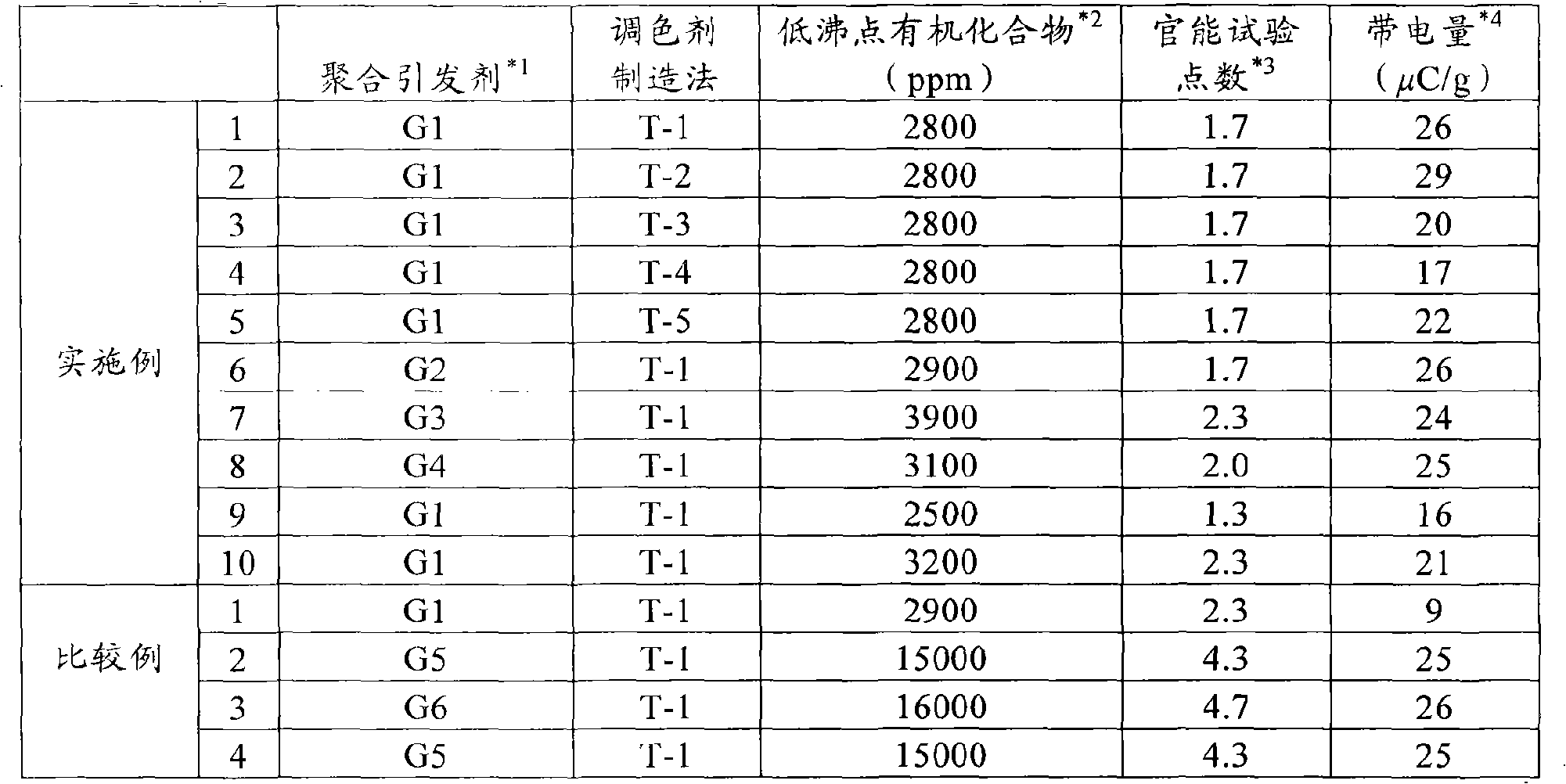Positive charge control agent, method for production of the agent, and electrophotographic toner using the agent
A manufacturing method and control agent technology, applied in the direction of developer, electrography, instrument, etc., can solve the problems of reduced charging performance, charging performance, coloring performance, and printing quality of positive charge control agents, and achieve the purpose of suppressing the generation of VOC , Excellent charging performance and colorability, and the effect of preventing color development
- Summary
- Abstract
- Description
- Claims
- Application Information
AI Technical Summary
Problems solved by technology
Method used
Image
Examples
Embodiment 1
[0069] (Manufacture of positive charge control agent)
[0070] Put reaction solvent isobutanol 180g in the 2L flask that has stirrer, condenser, thermometer, nitrogen inlet tube, and then add (meth) diethylaminoethyl acrylate 18g and methyl p-toluenesulfonate 18g, at 80 °C under nitrogen and stirred for 1 hour to carry out quaternization reaction. Thereafter, 210 g of styrene, 72 g of butyl acrylate, and 12 g of tert-butyl peroxy-2-ethylhexanoate (manufactured by Alkema Jifu) as a peroxide initiator were added while blowing nitrogen gas, and the temperature was raised to 95° C. (polymerization temperature) After stirring for 3 hours, 6 g of tert-butyl peroxy-2-ethylhexanoate was added and stirred for 3 hours to obtain a polymer solution.
[0071] The polymer solution was heated and dried under reduced pressure (product temperature: 140° C., reduced pressure to 10 kPa or less), and the solvent component was removed to obtain a polymer. The polymer is pulverized to form a posi...
Embodiment 2~8 and comparative example 4
[0102] As shown in Table 1, a positive charge control agent was produced in the same manner as in Example 1 except that the type of polymerization initiator used was changed. However, n-butanol was used instead of isobutanol in Example 8, resulting in a polymerization temperature of 115°C. In addition, in Comparative Example 4, an azo initiator was used instead of a peroxide initiator.
[0103] Furthermore, each toner was produced based on the production method of the toner shown in Table 1. The same various measurements and evaluations as in Example 1 were performed on these. The results are shown in Table 1.
Embodiment 9 and 10
[0105] A positive charge control agent and a toner were produced in the same manner as in Example 1. However, embodiment 9 has used 18g diethylaminoethyl (meth)acrylate, 2g methyl p-toluenesulfonate and 242g styrene, so that the copolymerization ratio of each monomer is (M1)+(M2):(M3) =98.7:1.3.
[0106] In addition, embodiment 10 has used 45g diethylaminoethyl (meth)acrylate, 45g methyl p-toluenesulfonate and 156g styrene, and the copolymerization ratio of each monomer is (M1)+(M2):(M3) =71.7:28.3.
[0107] The same various measurements and evaluations as in Example 1 were performed on these. The results are shown in Table 1.
PUM
| Property | Measurement | Unit |
|---|---|---|
| particle size | aaaaa | aaaaa |
| glass transition temperature | aaaaa | aaaaa |
| softening point | aaaaa | aaaaa |
Abstract
Description
Claims
Application Information
 Login to View More
Login to View More - R&D
- Intellectual Property
- Life Sciences
- Materials
- Tech Scout
- Unparalleled Data Quality
- Higher Quality Content
- 60% Fewer Hallucinations
Browse by: Latest US Patents, China's latest patents, Technical Efficacy Thesaurus, Application Domain, Technology Topic, Popular Technical Reports.
© 2025 PatSnap. All rights reserved.Legal|Privacy policy|Modern Slavery Act Transparency Statement|Sitemap|About US| Contact US: help@patsnap.com



